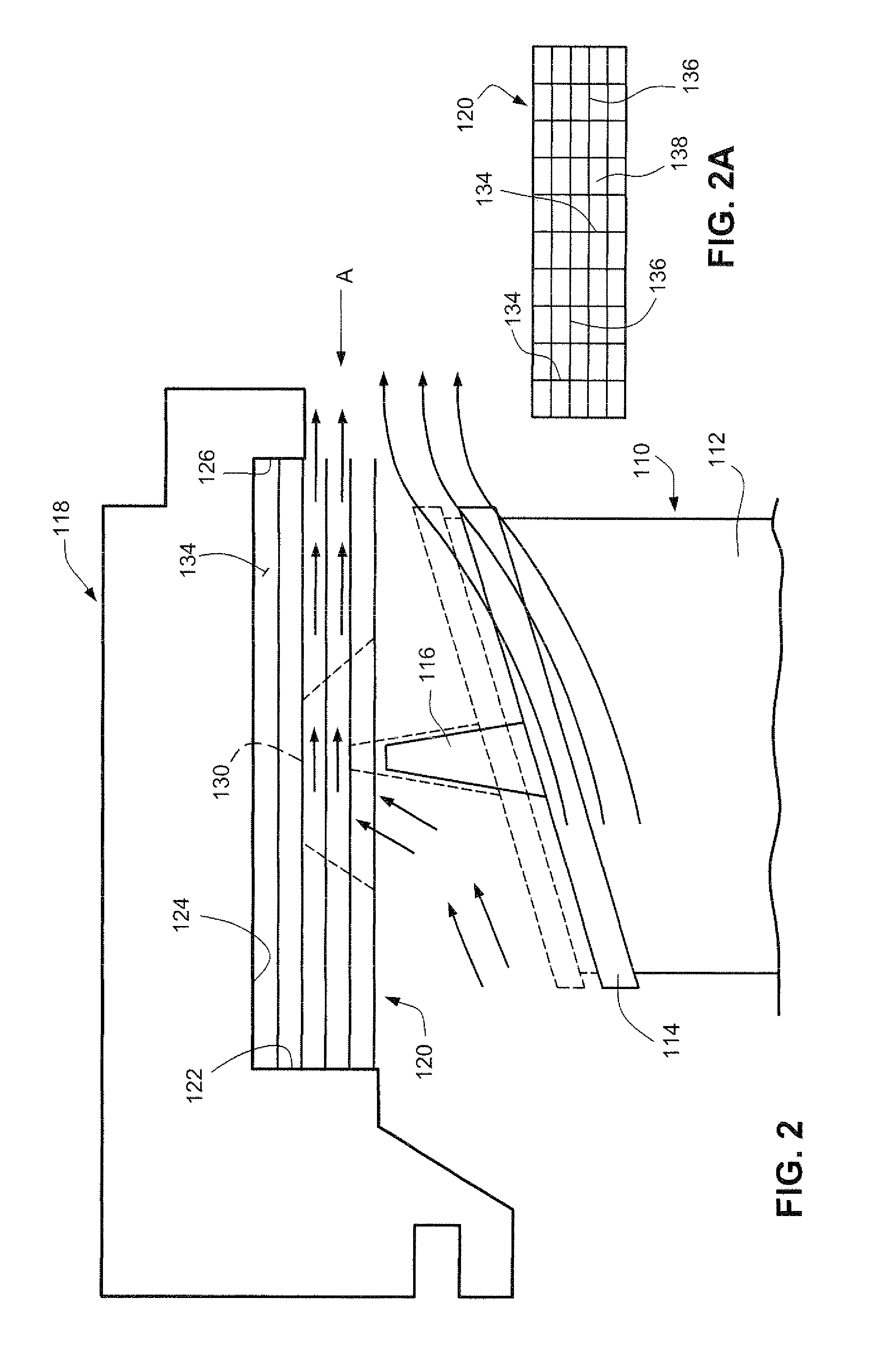Axially-oriented cellular seal structure for turbine shrouds and related method
a technology of cellular seals and turbine blades, which is applied in the direction of blade accessories, machines/engines, waterborne vessels, etc., can solve the problems of major loss sources and excessive mixing losses, and achieve the effect of reducing mixing losses
- Summary
- Abstract
- Description
- Claims
- Application Information
AI Technical Summary
Benefits of technology
Problems solved by technology
Method used
Image
Examples
Embodiment Construction
[0015]Referring now to FIG. 1, a typical tip-shrouded turbine bucket 10 includes an airfoil 12 which is the active component that intercepts the flow of gases and converts the energy of the gases into tangential motion. This motion, in turn, rotates the rotor to which the buckets 10 are attached.
[0016]A shroud 14 (also referred to herein as a “tip shroud”) is positioned at the tip of each airfoil 12 and includes a plate supported toward its center by the airfoil 12. The tip shroud may have various shapes as understood by those skilled in the art, and the exemplary tip shroud as illustrated here is not to be considered limiting. Positioned along the top of the tip shroud 14 is a seal rail 16 which minimizes passage of flow path gases through the gap between the tip shroud and the inner surface of the surrounding components. The rail 16 typically provided with a cutting tooth (not shown) for a purpose described below.
[0017]As shown in FIG. 1, the surrounding stationary stator shroud 1...
PUM
| Property | Measurement | Unit |
|---|---|---|
| degree angles | aaaaa | aaaaa |
| rotation | aaaaa | aaaaa |
| angle | aaaaa | aaaaa |
Abstract
Description
Claims
Application Information
 Login to View More
Login to View More - R&D
- Intellectual Property
- Life Sciences
- Materials
- Tech Scout
- Unparalleled Data Quality
- Higher Quality Content
- 60% Fewer Hallucinations
Browse by: Latest US Patents, China's latest patents, Technical Efficacy Thesaurus, Application Domain, Technology Topic, Popular Technical Reports.
© 2025 PatSnap. All rights reserved.Legal|Privacy policy|Modern Slavery Act Transparency Statement|Sitemap|About US| Contact US: help@patsnap.com



